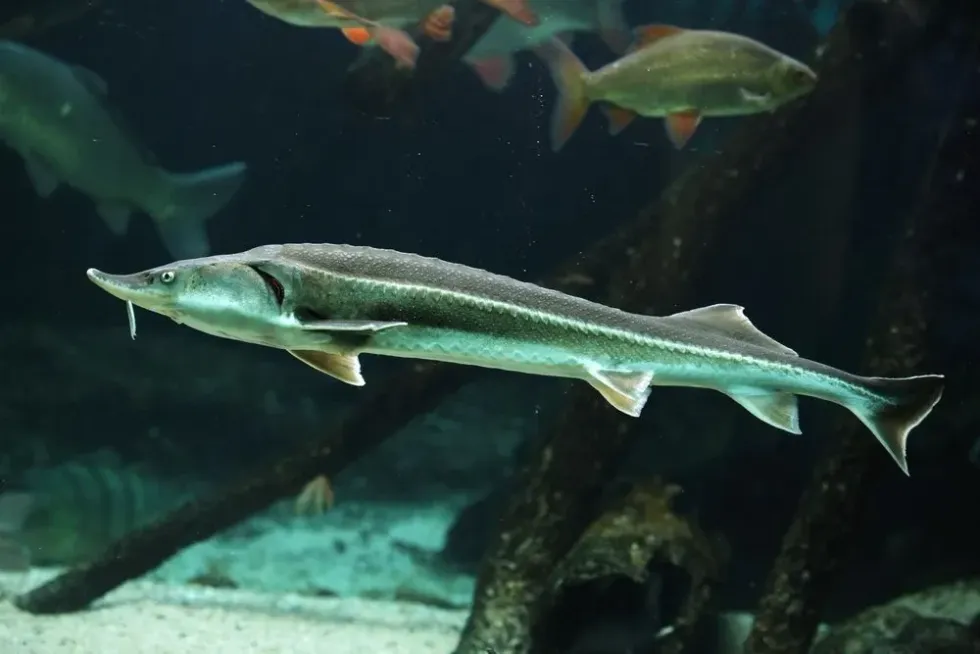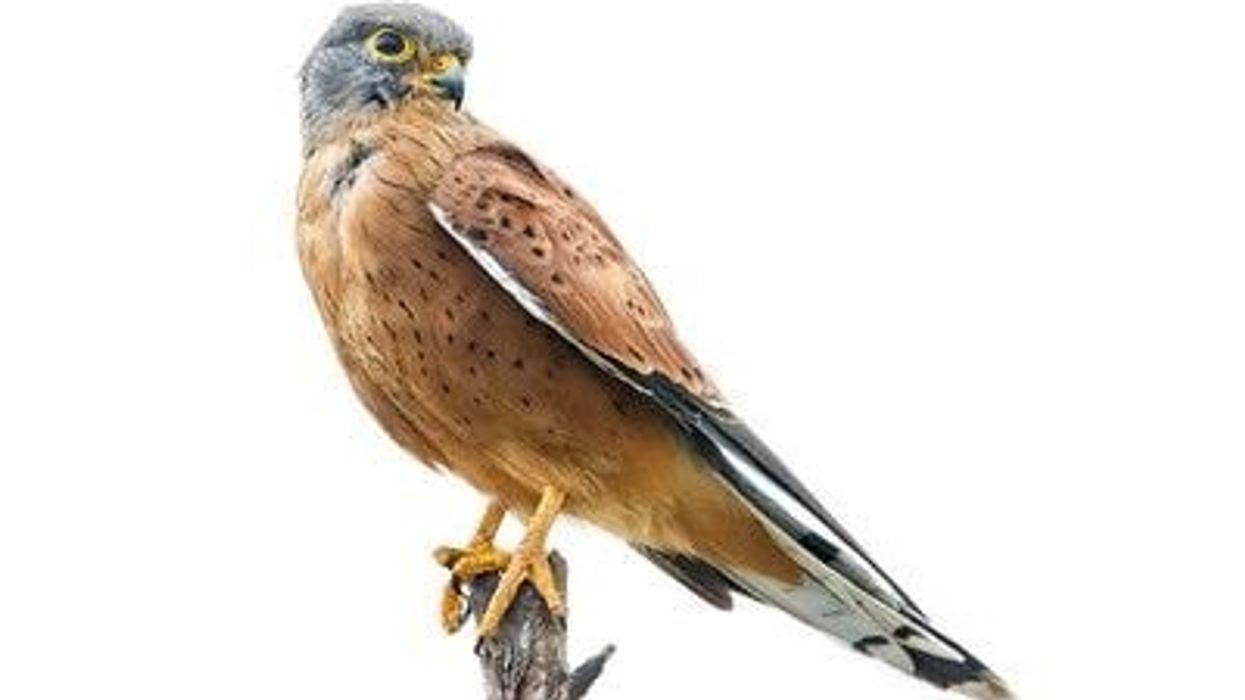The sterlet (Acipenser ruthenus) is one of the smallest species of sturgeon at around 39 in (1 m)in length. This fish species is found in large rivers of the Black Sea, Azov Sea, and the Caspian Sea.
Few populations are also seen in the rivers of Siberia. It is a freshwater sturgeon species as populations migrating between fresh water and salt water have ceased to exist.
The numbers of sterlet have now reduced throughout its native range to such an extent that this species is now considered vulnerable.
Overfishing for sterlet caviar, meat, and isinglass, water pollution, and the construction of dams have made the number of sterlets degrade exponentially. Sterlets have been introduced to non-native regions as part of the conservation process, but it has not shown any positive results as of now.
Sturgeons sometimes even live for more than 100 years. The long life and slow maturity rate have decreased the chances of survival for this species as fishing for food kill these fishes at a faster rate than they actually reproduce.
The growth rate in terms of size also depends on water quality, diet, feeding rate, and temperature of the water.
The fish is quite variable in color and is easily recognized by the presence of a number of whitish lateral scutes, fringed barbels, and a narrow and elongated snout. Other European surgeons do not possess these characteristics. Sterlets feed on benthic organisms with food including crustaceans, other fish, worms, and insect larvae.
For more relatable content, check out these rainbow cichlid facts and buffalo fish interesting facts.
Sterlet Interesting Facts
What type of animal is a sterlet?
A sterlet is a small species of sturgeon native to Eurasia.
What class of animal does a sterlet belong to?
The sterlet (Acipenser ruthenus) falls under the class of Actinopterygii in the kingdom of Animalia.
How many sterlets are there in the world?
The population of this fish is not known. However, their numbers are decreasing at an alarming rate currently, and at its current trend, this species won't last for too much longer.
Where does a sterlet live?
This species of sturgeon from Eurasia is found in the large rivers flowing through the Azov Sea, the Black Sea, and the Caspian Sea. The sterlet is also found in the rivers of Siberia as far east as the Yenisei drainages.
What is a sterlet's habitat?
The habitat of a sterlet includes rivers and ponds. It is a freshwater species.
A pond with a size of 2000-3000 gal (9092-13638 L) should be enough to keep the fish into adulthood.
Who does a sterlet live with?
Sturgeons usually prefer staying alone or sometimes swim together in a small group.
How long does a sterlet live?
There have been cases where sturgeons have lived for 100 years of age. However, on average, the sterlet is known to live for around 55 years.
How do they reproduce?
Females lay a clutch of 15,000–44,000 eggs. Spawning is seen from April to June. All species of sturgeons mature slowly. Depending on the species, males take around 10 years and females take 15-20 years to reach sexual maturity. Eggs are laid on a rocky substrate. Males spray sperm which is carried by the water to the eggs.
What is their conservation status?
The conservation status of the sterlet (Acipenser ruthenus) is categorized as Vulnerable by the IUCN Red List.
The majority of trades of sterlets in the world are now for their meat and caviar rather than as pets. They are only really used as a food source.
Sterlets are found in many regions of the world in aquaculture, however, they are bred just to be sold as meat. Construction of dams in the region where the sterlet exists has also reduced the numbers of the species quite a lot. The population of this species migrating from fresh to salt water is now extinct.
Some conservation practices like moving some specimens to a non-native river or pond have been happening, but are yet to show any fruitful results.
Sterlet Fun Facts
What does a sterlet look like?
The sterlet (Acipenser ruthenus) has 56-71 lateral scutes, 11-18 dorsal scutes, 10-20 ventral scutes, 32-54 dorsal-fin rays, and 16-34 anal fin rays. The lower lip is split and the fish has a long and pointed snout. The color in the body is gray to dark brown. It sometimes has a dark green coloration on the back.
The fin edges and belly are white in color. Scutes are pale in color. The ventral side sometimes seems yellowish.
The Siberian sturgeon and the sterlet are similar in size, however, the fins do not have white edges on the Siberian sturgeon.
How cute are they?
They are not considered cute.
How do they communicate?
Fishes typically communicate visually and chemically.
How big is a sterlet?
The sterlet (Acipenser ruthenus) grows up to a length of 35.43-49.21 in (90-125 cm).
Beluga sturgeons are one of the largest freshwater fishes in the world. The length of this species has a range of up to 24 ft (7.3 m).
The Russian sturgeon can grow up to 83 in (210.8 cm).
How fast can a sterlet swim?
The speed is not known. Sturgeons swim at a speed of 0.96-1.41 mph (1.5-2.2 kph) on average.
How much does a sterlet weigh?
The weight of a sterlet goes up to 35.27 lb (16 kg).
What are the male and female names of the species?
Males and females of this species are not given different names.
What would you call a baby sterlet?
A baby sterlet is called spawn.
What do they eat?
The sterlet sturgeon (Acipenser ruthenus) feeds on benthic organisms. The diet of sturgeon species includes various crustaceans, worms, clams, shrimp, mussels, other fish, micro and macro-invertebrates, crabs, insect larvae, and barnacles.
Are they aggressive?
They are not usually considered aggressive towards humans.
Would they make a good pet?
The sterlet sturgeon (Acipenser ruthenus) is not considered a pet and is only kept in ponds for the purpose of the meat trade.
It takes almost 10 years for the sterlet fish to reach adult size. It is important that we leave them alone to thrive in their habitat and live a long life.
Did you know...
There are 27 sturgeon species in the family Acipenseridae. Out of these 27 species, only a few are found in ponds and are commercially sold. They are sterlet, Siberian sturgeon, beluga sturgeon, stellate sturgeon, and Russian sturgeon.
In Russia, the flesh, caviar, and isinglass of the sterlet are quite famous.
The growth rate of a sterlet is pretty slow as it takes a decade to reach adult size.
What is the difference between a sturgeon and a sterlet?
There is no difference in sterlet vs sturgeon as a sterlet is a small species of sturgeon itself. These sturgeon species are only found in freshwater.
Are sterlets good for ponds?
Ponds are one of the best habitats for sterlets if kept outside as they grow very large. However, a lot of situations need to be addressed. Oxygen intake, healthy feeding, and clean water are important for the fish to thrive.
Here at Kidadl, we have carefully created lots of interesting family-friendly animal facts for everyone to discover! For more relatable content, check out these palm warbler facts and blue jay fun facts for kids.
You can even occupy yourself at home by coloring in one of our free printable sterlets coloring pages.










